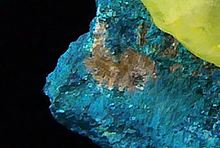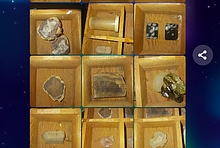Home PageAbout MindatThe Mindat ManualHistory of MindatCopyright StatusWho We AreContact UsAdvertise on Mindat
Donate to MindatCorporate SponsorshipSponsor a PageSponsored PagesMindat AdvertisersAdvertise on Mindat
Learning CenterWhat is a mineral?The most common minerals on earthInformation for EducatorsMindat ArticlesThe ElementsThe Rock H. Currier Digital LibraryGeologic Time
Minerals by PropertiesMinerals by ChemistryAdvanced Locality SearchRandom MineralRandom LocalitySearch by minIDLocalities Near MeSearch ArticlesSearch GlossaryMore Search Options
The Mindat ManualAdd a New PhotoRate PhotosLocality Edit ReportCoordinate Completion ReportAdd Glossary Item
Mining CompaniesStatisticsUsersMineral MuseumsClubs & OrganizationsMineral Shows & EventsThe Mindat DirectoryDevice SettingsThe Mineral Quiz
Photo SearchPhoto GalleriesSearch by ColorNew Photos TodayNew Photos YesterdayMembers' Photo GalleriesPast Photo of the Day GalleryPhotography
╳Discussions
💬 Home🔎 Search📅 LatestGroups
EducationOpen discussion area.Fakes & FraudsOpen discussion area.Field CollectingOpen discussion area.FossilsOpen discussion area.Gems and GemologyOpen discussion area.GeneralOpen discussion area.How to ContributeOpen discussion area.Identity HelpOpen discussion area.Improving Mindat.orgOpen discussion area.LocalitiesOpen discussion area.Lost and Stolen SpecimensOpen discussion area.MarketplaceOpen discussion area.MeteoritesOpen discussion area.Mindat ProductsOpen discussion area.Mineral ExchangesOpen discussion area.Mineral PhotographyOpen discussion area.Mineral ShowsOpen discussion area.Mineralogical ClassificationOpen discussion area.Mineralogy CourseOpen discussion area.MineralsOpen discussion area.Minerals and MuseumsOpen discussion area.PhotosOpen discussion area.Techniques for CollectorsOpen discussion area.The Rock H. Currier Digital LibraryOpen discussion area.UV MineralsOpen discussion area.Recent Images in Discussions
Mineralogical ClassificationOn the origin of »iron-cross« twins of pyrite from Mt. Katarina, Slovenia
5th Mar 2016 18:47 UTCUwe Kolitsch Manager
Iron-cross twins of pyrite are well known among mineralogists, however it is quite surprising that the conditions of their formation remain unexplored. To address this question we studied pyrite twins from Upper-Permian silts of Mt. Katarina near Ljubljana (Slovenia), that represent one of the most typical geological environments for twinned pyrite. Mineralization of pyrite starts with a reduction of the primary red-colored hematite-rich sediment by sulphide rich fluids that penetrated the strata. A short period of magnetite crystallization is observed prior to pyrite crystallization, which indicates a gradual reduction process. Sulphur isotope analysis of pyrite shows an enrichment in δ34S, suggesting its origin from the neighboring red bed deposit. Other sulphides, such as chalcopyrite and galena, formed at the end of pyrite crystallization. Remnants of mineralizing fluids trapped at the interfaces between the inclusions and host pyrite show trace amounts of Pb and Cu, indicating their presence in the solutions throughout the period of pyrite crystallization. Electron microscopy and spectroscopy study of twin boundaries showed that interpenetration twinning is accomplished through complex 3D intergrowth of primary {110} Cu-rich boundaries, and secondary {100} boundaries that are pure. We show that ~ 1 monolayer of Cu atoms is necessary to stabilize the {110} twin structure. When the source of copper is interrupted, the two crystal domains continue to grow in predefined orientation along {100} interfaces, favorable for pure pyrite. The presence of Cu thus appears to be necessary condition for the formation of iron-cross twins in pyrite.
Confirms the general picture (see other publications of A. Rečnik) that monolayers of impurity atoms are responsible for twinning.

6th Mar 2016 23:55 UTCDan Costian
Very interesting research explaining the genesis of such rarities.
I uploaded recently an "iron cross" pyrite specimen, which landed in the less-visited user gallery area
http://www.mindat.org/photo-734913.html
Dan




Mindat.org is an outreach project of the Hudson Institute of Mineralogy, a 501(c)(3) not-for-profit organization.
Copyright © mindat.org and the Hudson Institute of Mineralogy 1993-2024, except where stated. Most political location boundaries are © OpenStreetMap contributors. Mindat.org relies on the contributions of thousands of members and supporters. Founded in 2000 by Jolyon Ralph.
Privacy Policy - Terms & Conditions - Contact Us / DMCA issues - Report a bug/vulnerability Current server date and time: April 18, 2024 09:49:29
Copyright © mindat.org and the Hudson Institute of Mineralogy 1993-2024, except where stated. Most political location boundaries are © OpenStreetMap contributors. Mindat.org relies on the contributions of thousands of members and supporters. Founded in 2000 by Jolyon Ralph.
Privacy Policy - Terms & Conditions - Contact Us / DMCA issues - Report a bug/vulnerability Current server date and time: April 18, 2024 09:49:29











